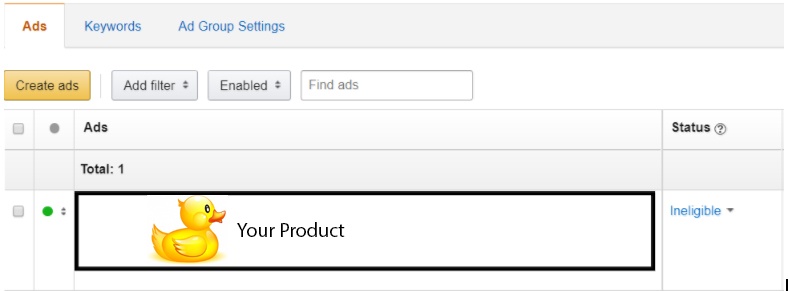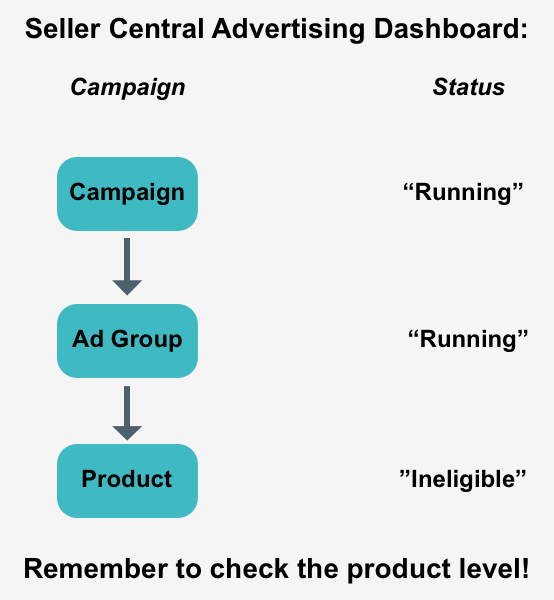Everyone who’s been selling on Amazon for at least a month knows the importance of effective inventory management. While we’ve spent a lot of time on the Bobsled blog discussing things like listing optimization, ads optimization, squatter management, and other aspects of optimizing your Amazon presence to boost sales, these things pale in comparison to the importance of managing your inventory. When you run out of stock…well, there’s nothing to optimize.
I’ve read quite a few mortifying stories on Amazon’s forum about ineffective inventory management dramatically affecting accounts. Sometimes these horror stories involve potential losses adding up to tens of thousands of dollars a week! For larger brands, it can be even worse. Stockouts will certainly cause your sales to suffer, but low or no inventory on specific items also has specific implications for your Sponsored Products and AMS advertising campaigns.
Inventory management is a precondition for effectively managing every other aspect on the account. Below are several situations we have examined for a few clients of ours and what you can learn from them. (One of the benefits of working with Bobsled is that we can compare data and results from numerous clients selling in various categories.)

Low inventory and out of stock inventory suggestions in Seller Central, showing estimated days of coverage.
Generally speaking, as soon as you see the “low inventory product” alert in your Seller Central account when you log in, it may be too late to avoid stockouts. We have seen impressions and clicks decline as soon as a product gets hit with this warning.
Our hypothesis here is that inventory level matters in the mystical Amazon quality score rank.

When your product goes out of stock, however, that’s when you’re really in trouble. Your Sponsored Product campaigns instantly become ineligible and your Best Seller Rank drops by the second. It wouldn’t be at all surprising if your organic ranking for given keywords takes a serious hit.
Seller Central Tip
It’s vital that you make sure your campaigns are actually running, which requires checking at the product level, because unfortunately the interface isn’t intuitive enough to allow you to see otherwise.
Even when structuring campaigns in a streamlined fashion (like having one product per ad group, and one ad group per campaign), Amazon will show both your campaign and ad group as running, but with your product ineligible.

Checking campaigns at the product level will enable you to see which products are eligible and running, and which aren’t.
AMS Tip
We have also noticed a small anomaly in AMS regarding campaigns stopping when the product goes out of stock. In one case, we had two campaigns running in AMS (a Sponsored Product campaign and a Product Display campaign) for the same product.
When the product ran out of stock, the Sponsored Products campaign was paused immediately, yet the Product Display campaign kept its eligible status for a number of hours.
Amazon promises its merchants that it will automatically pause campaigns when a product runs out of stock (so as not to waste advertising spend on products that are unavailable to purchase), so we found this situation particularly perplexing. While we don’t think that Amazon is deliberately trying to waste Vendors’ budgets in this situation, it just proves that Vendors should be checking and pausing campaigns themselves to ensure they stop running.
When can you expect your sales to go back to normal?
This is different for every account because there are several other factors that play a role in the length of time it takes for the account to recover in addition to the stockout itself. By the time your product’s been restocked, there could be increased competition, price changes, problems with unauthorized sellers, issues related to the seasonality of the product could come into play, and so on. The most recent case we observed ourselves was in the beauty industry, and it took two weeks for sales to go back up to the pre-stockout level.
Recovering from the impact when your products get back in stock
Let’s say that you’ve run out of stock, despite your best efforts. What is your best option to course-correct?
The best way to signal Amazon that you’re back in action is with a big sales bump. Several Amazon sellers have claimed that offering price discounts and other promotions as soon as their products were back in stock helped them reduce the recovering time to about one week.
You might want to consider something along these lines that makes sense for your brand. There are various options to consider: lightning deals, price discounts, giveaways, and so forth. This is a good time to utilize all your resources, from email newsletter subscribers to social media and other sales channels.
In Conclusion
Given the tight-lipped nature of Amazon regarding its search and ranking algorithm, we can only really speculate about the true effect of inventory stockouts. However, the key point of this post is to remind you that going out of stock can undo much of the hard work you’ve already done to boost visibility of your brand on Amazon–both in organic search and PPC campaigns. If your product goes out of stock, it will take considerable expense and energy to return to previous levels of sales. It will probably take at least two or three weeks to regain lost ground once you’re back in stock.
While optimizing and advertising can work wonders for your brand, they only matter if you have product to work with. Effectively managing your inventory comes first.
